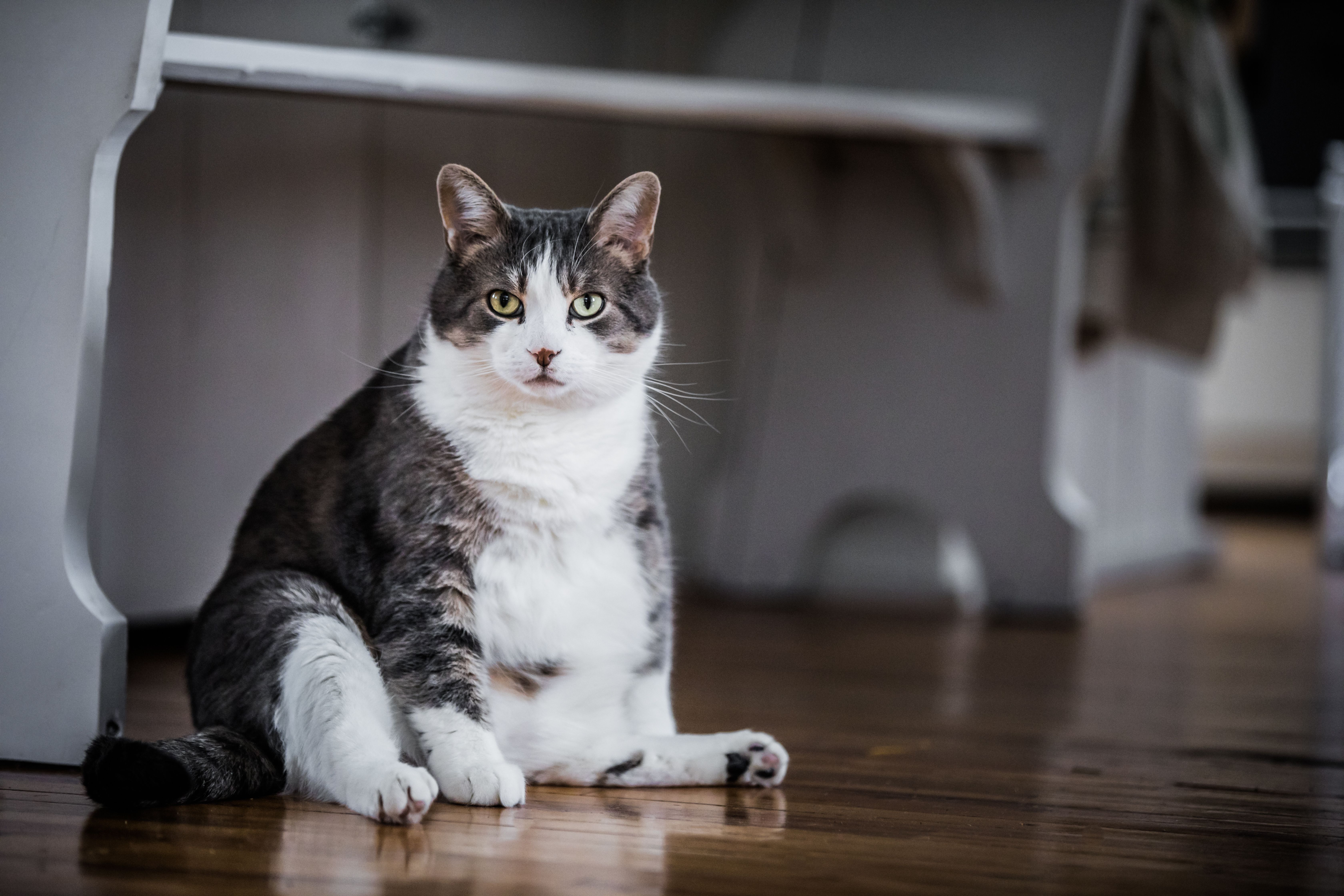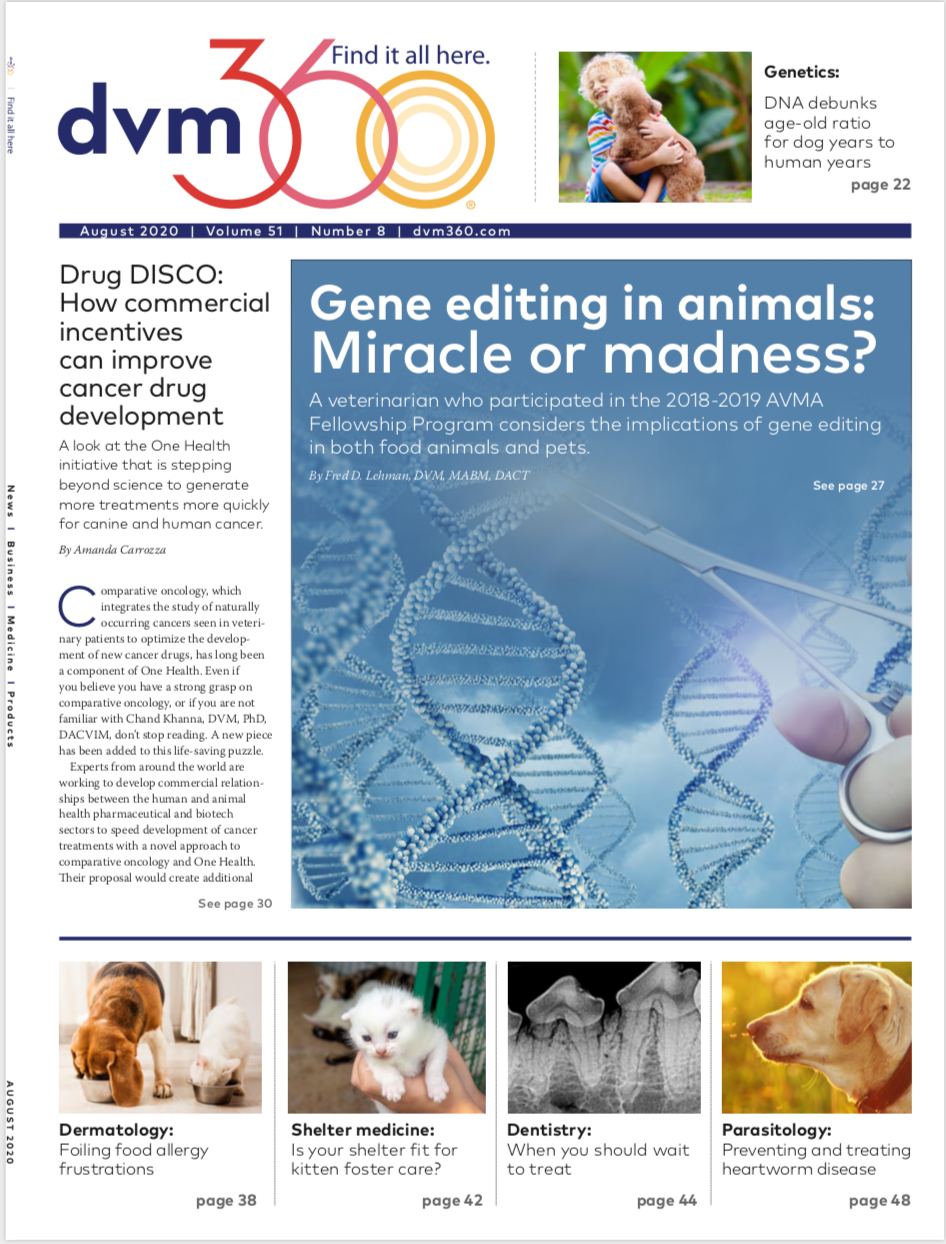When cats get hangry…
A new study finds an explanation for why it’s so difficult for owners of obese cats to restrict their pet’s diet.
aetb / stock.adobe.com

Up to 60% of cats in the United States are obese. One of the most common methods used to treat obesity is calorie restriction. Because many owners find calorie restricting their cat to be difficult, however, compliance with this veterinary recommendation often suffers. Despite calorie restriction being arguably critical to the successful treatment of feline obesity, little is known about how this dietary change affects cats’ feeding patterns and food intake.
What they did
To find out, researchers assigned 80 domestic shorthair cats to one of two groups (n = 40 each) that were balanced for sex, age, weight, and body condition score.1 Several cats ultimately were excluded from the trial due to failure to adjust to their social group, leaving 38 cats in the test group (weight 4.2 ± 0.9 kg) and 31 cats in the control group (weight 4.4 ± 0.8 kg).
All cats were fed an identical commercially available diet on an identical schedule from an electronic feeding device. They were given canned food in the morning and dry food in the afternoon/overnight, with very occasional treats. The test group was mildly calorie restricted (6%) by cutting off access to additional food when their allotted calorie intake was reached. All cats were monitored for 9 months, after which the calorie restriction was ended.
What they found
Fed ad libitum, cats consumed about 30% of their calories in the morning serving of wet food and 70% of their calories in dry food over the remainder of the day. The cats in the restricted group quickly changed to rapidly consuming 70% of their calories in the first meal, leaving only 30% of their calories for the rest of the day. This resulted in significantly decreased food access in the evening and overnight. Because of this, the research team limited the maximum amount of calories consumed in the morning meal to 50%. The control group saw no change.
When the calorie restriction ended, the restricted group quickly reverted to its original 30/70 calorie consumption ratio. The researchers also noted an increase in fights during the pre-mealtime period in the calorie-restricted group.
What to take home
Restricting cats’ calories changes their feeding behavior significantly. They tend to eat larger meals faster, consuming their allotted calories more quickly. This is compared with the normal feline behavior of multiple small meals throughout the day. The authors also showed that calorie-restricted cats tend to get “hangry.” In the home environment, the authors suggest, these changes would likely result in begging behavior that could in turn make owner compliance with calorie restriction less likely. The authors also suggest that strategies such as puzzle feeders or dividing the cats’ food into multiple smaller meals could be a strategy to combat these changes.
Dr. Nappier is assistant professor of community practice in the Department of Small Animal Clinical Sciences at the Virginia-Maryland College of Veterinary Medicine in Blacksburg, Virginia.
Reference
1. Ligout S, Si X, Vlaeminck H, Lyn S. Cats reorganise their feeding behaviours when moving from ad libitum to restricted feeding. J Feline Med Surg. 2020;Mar 9. doi: 10.1177/1098612X19900387
